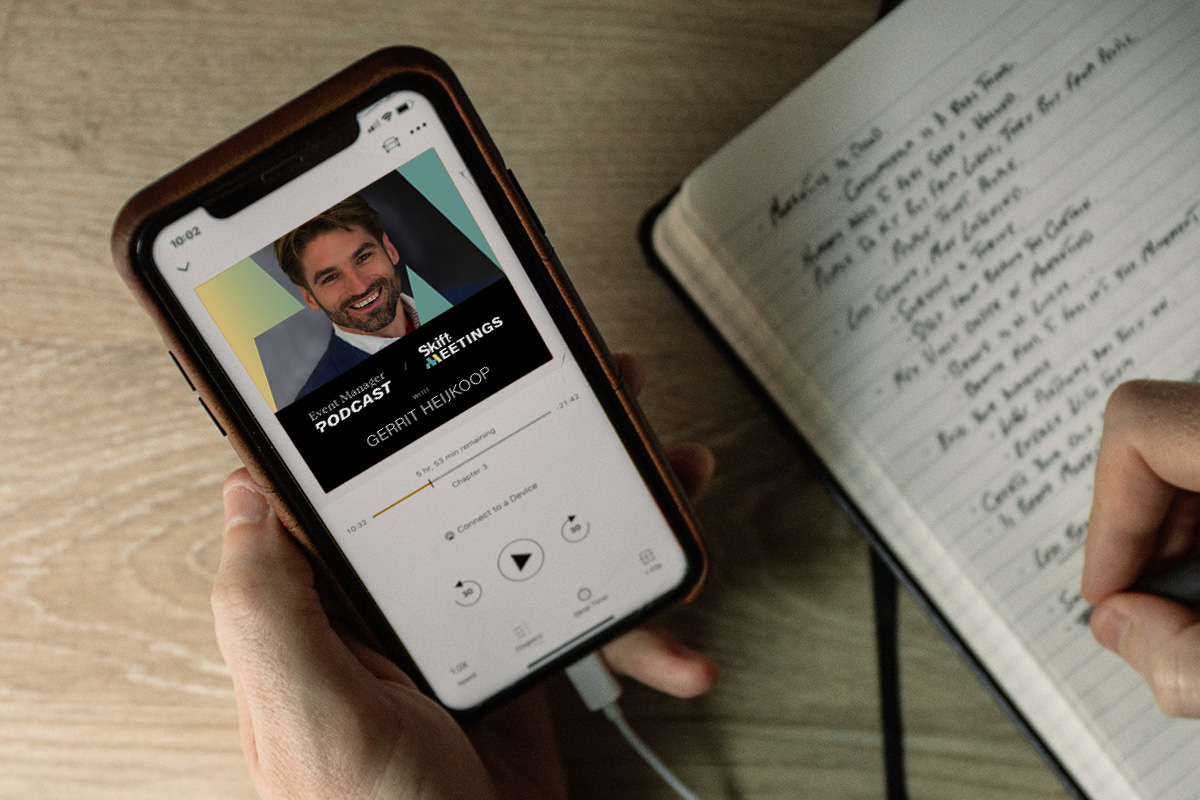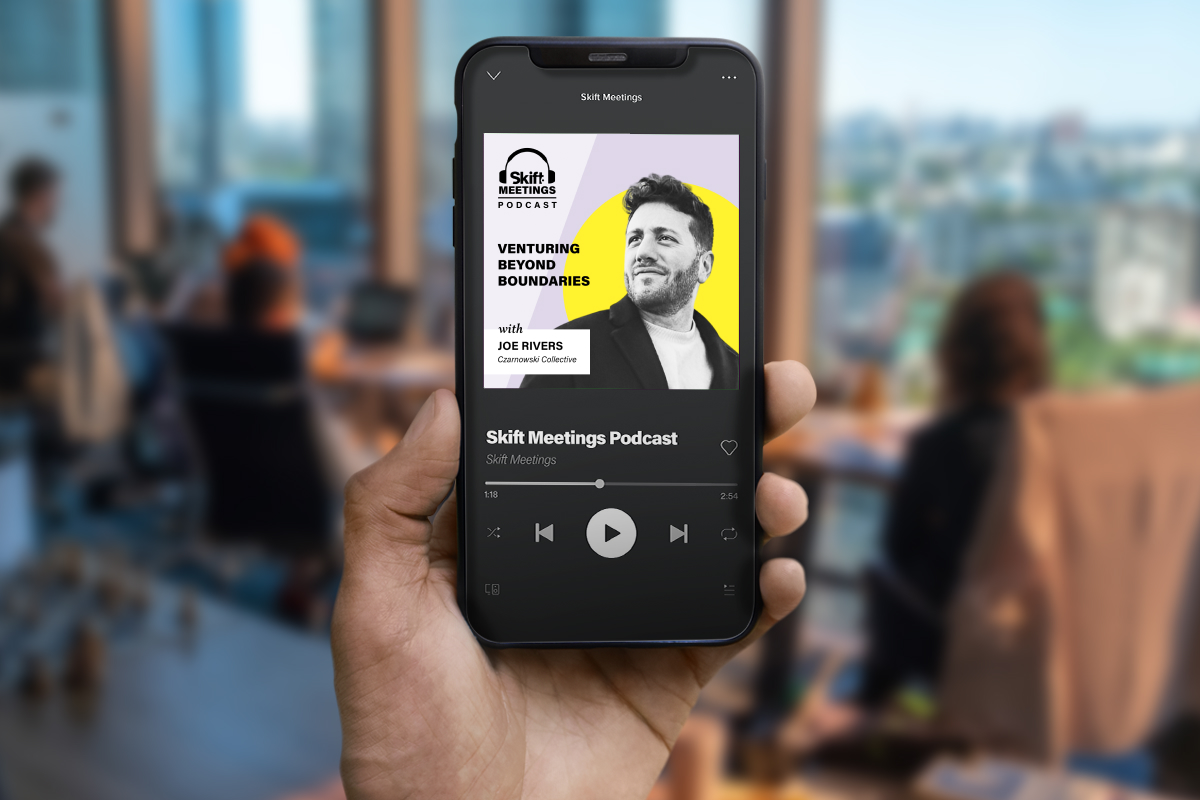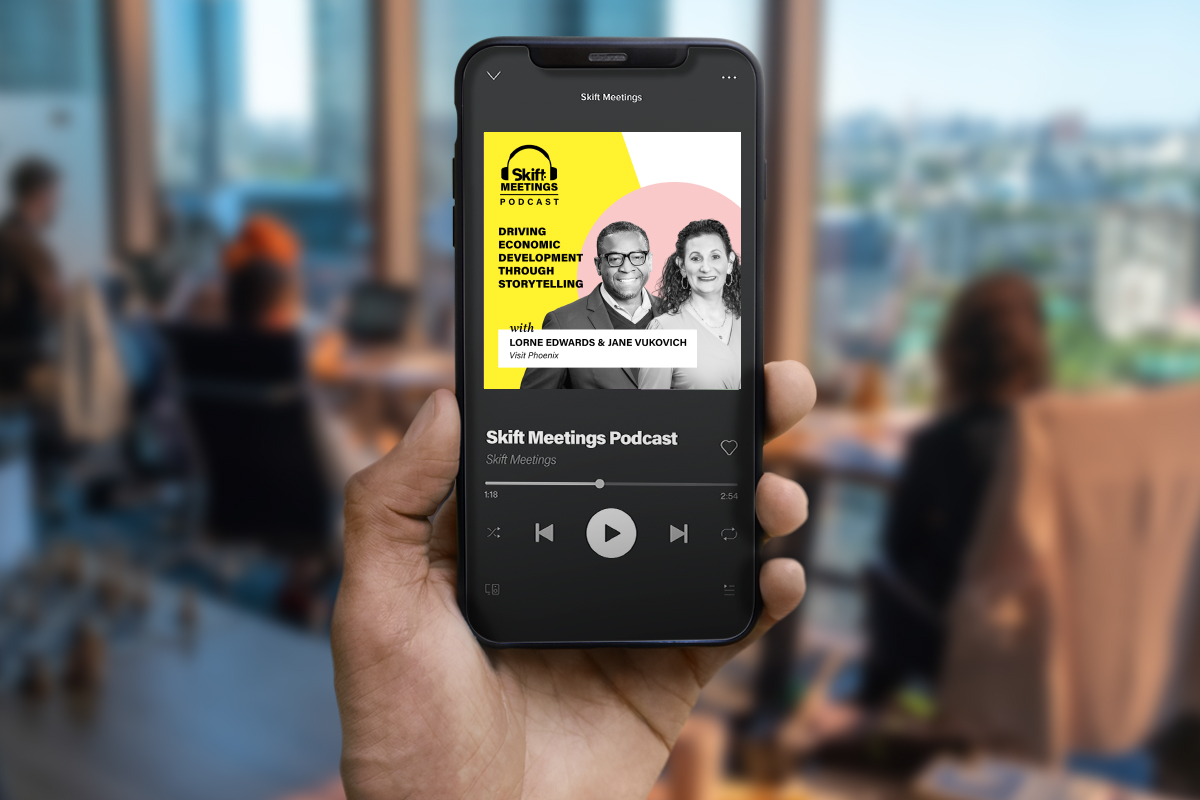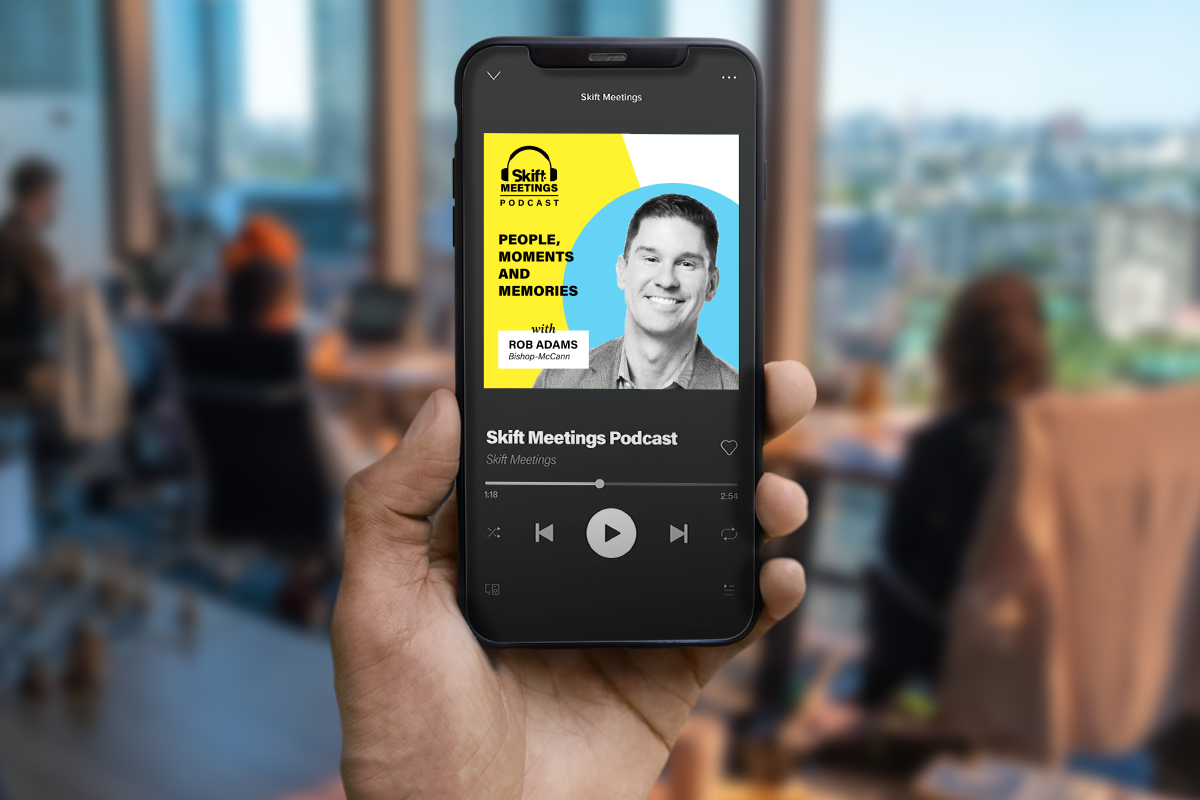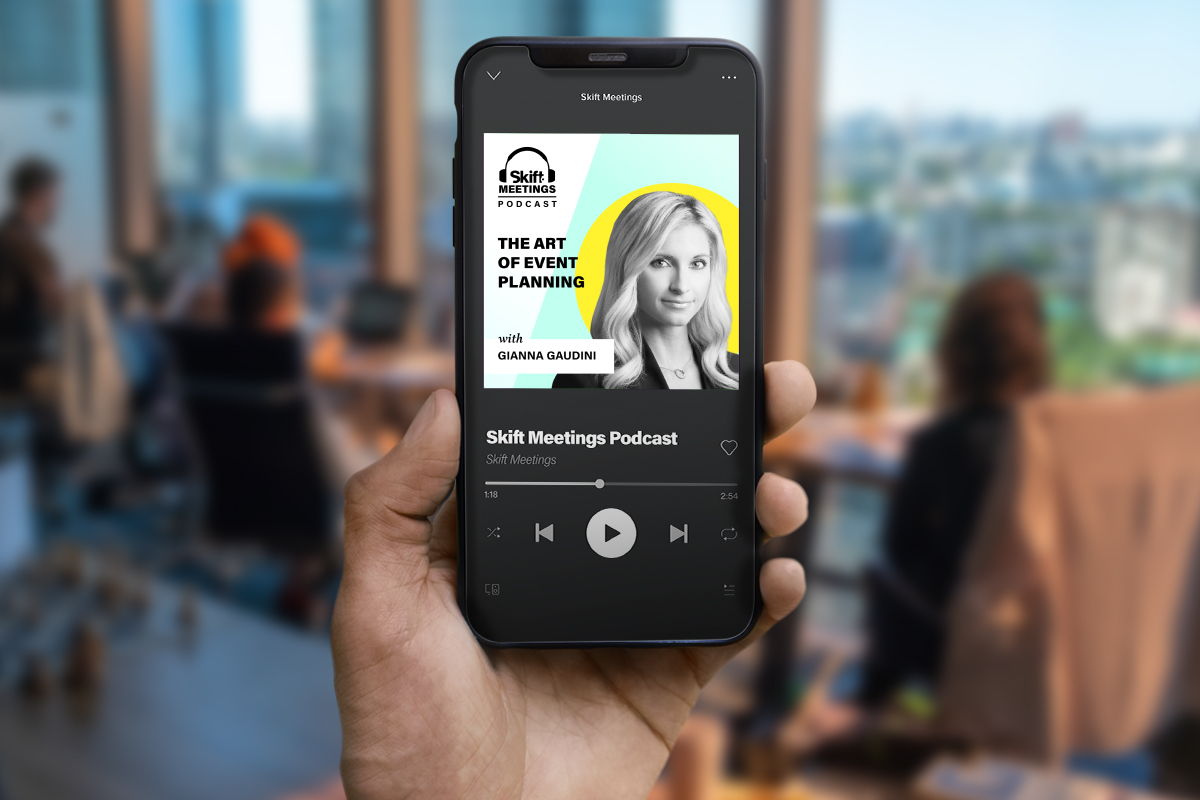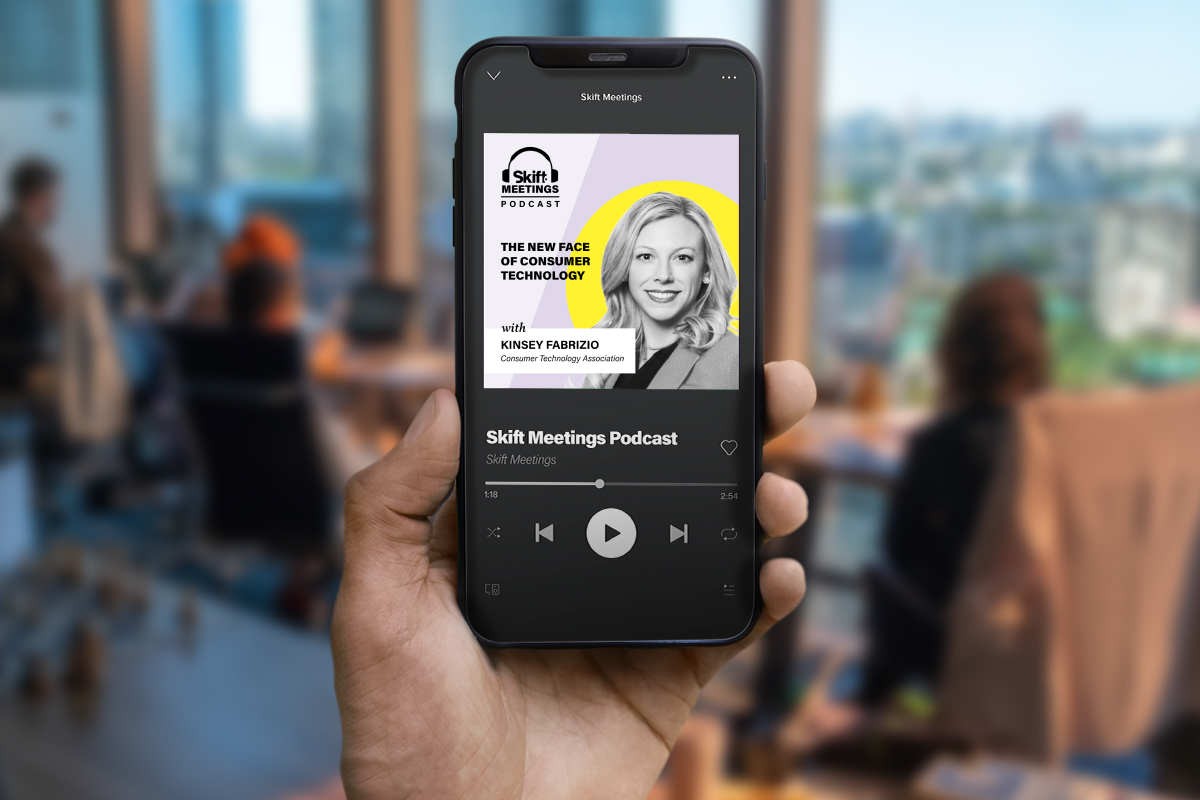Skift Take
In this episode we are joined by Gerrit Heijkoop, Executive Partner / Moderator & Host at LiveOnlineEvents, where together we deep dive into the hybrid events, from both a production perspective and an audience perspective.
Before we get into the discussion, we just wanted to take a moment and note that this episode is longer than previous episodes. Whether you settle in to listen in full, or hit the pause button now and then, we hope that you find this episode as insightful as we did.
Gerrit first encountered the events industry following the completion of his engineering degree. He began his career in management consultancy and was tasked with helping his new organization move headquarters. It was during this time that he bonded with the company’s CEO and mentioned that down the line he’d like to be an entrepreneur and work within the events industry, something he had a little experience with during his days at university and working with the student body. This small conversation led to big changes for Heijkoop, with the CEO never forgetting this conversation. This resulted in the CEO putting Gerrit in charge of throwing the new headquarters’ opening party. This experience taught Heijkoop the events industry was the future for his career, leading him to quit his job and start as a freelance event professional in 2008, right at the start of the financial crisis.
Gerrit talks us through various points in his career since then, some that worked, some that didn’t, and the various industry and technological changes that took place along the way, right up until today and his work with LiveOnlineEvents.
Subscribe to the Skift Meetings Podcast: Apple Podcasts | Spotify | Overcast | Pocket Casts | Google Podcasts | Amazon | RSS
When thinking about the different types of platforms and technology that have developed over the years, Heijkoop believes that the events that are not successful are those that are heavily focused on the platform design, networking and other elements outside of the content they are producing and providing. These content-light events, which may have worked in person because they provided opportunities to network or get out the office as a team, don’t work within the virtual space. Heijkoop believes that those events which are heavily geared towards information sharing are ideal for online events, but those that are more content-light and experience focused struggle to be successful within the virtual space.
Heijkoop also believes that any event moving forward that is predominantly in-person yet doesn’t incorporate some virtual element, i.e. making it hybrid, is in turn being unnecessarily exclusive. Heijkoop adds that if this is a design choice, with exclusivity being a core part of the event, then this is somewhat understandable, however for most event planners, the aim is to reach as many people as possible.
When considering sponsors and sponsorship opportunities, Heijkoop notes that there are more possibilities available with hybrid events. He explains that with in-person events, sponsors were only able to be promoted to that audience on the day(s) of the event, in that specific location. However, with a hybrid event, or virtual, one of the main components is the availability of on-demand as well as the global reach. As such, sponsors are able to reach a much wider audience, exposing their brand to people over an extended period of time, and geographical location is no longer a factor to consider as on-demand is often available globally. Therefore, the benefits to sponsors greatly increase when a hybrid model is implemented.
As discussed earlier, events are often places which are full of content, and Heijkoop adds that this results in them being the best time and place to capture that content for your organization, which can then be repurposed at various times after the event. This could be information generated from the event and shared in real-time, allowing social media audiences to see what is taking place in the moment. However, it can also be an opportunity to pull together content from the event that can be shared over a longer period of time. Heijkoop notes that one of the main keys for teams is to think of this content capturing strategy ahead of time and plan accordingly.
Heijkoop goes on to detail what he considers to be the five types of hybrid events, which are: physical event being broadcast, with the the in-person audience being the main focus; recording in front of a live studio audience, but your virtual audience is your main focus; having a central studio with co-locations; using time to allow you to bring in your speakers twice on the same event day; having a blend of virtual and physical encounters.
This episode delves into the above in greater detail, as well as looking at other topics such as: understanding how event tech can help your event versus what it can do; understanding what the real need is for virtual platforms; utilizing events as a means of communication; considering hybrid events as a form of tv production; merging virtual events with continuous education credits to create a winning business model; the important of stand design to your event’s brand and marketing; the variety of design choices that hybrid events can offer; why live streaming on social media is the best way to reignite any organization on social media.
Gerrit took part in our Event Design Summit, which he references during the discussion. You can view an on demand recording of the event here.
You can listen to all our episodes via your favourite podcasting app. Just hit the subscribe button to ensure you never miss an episode.
